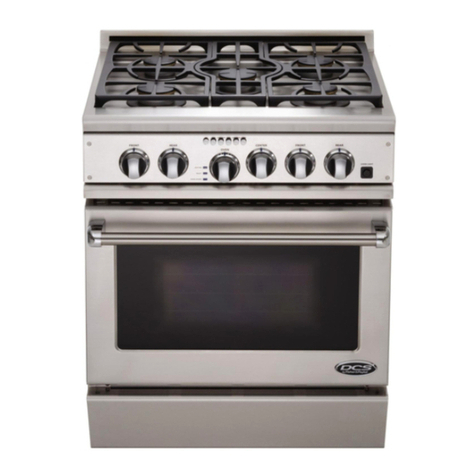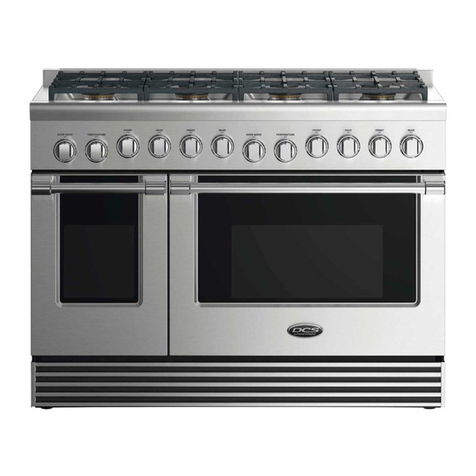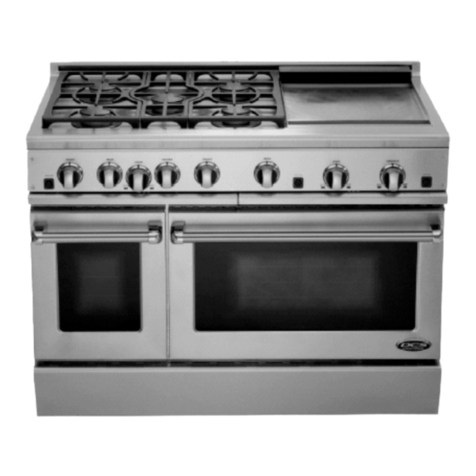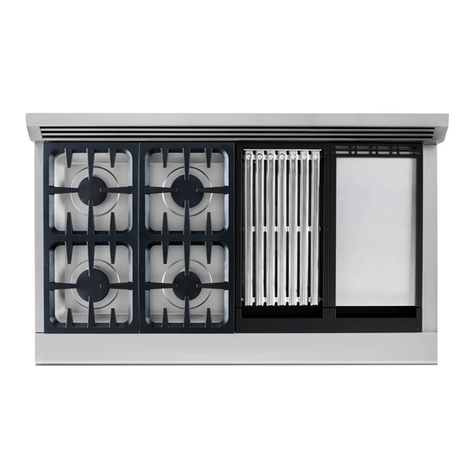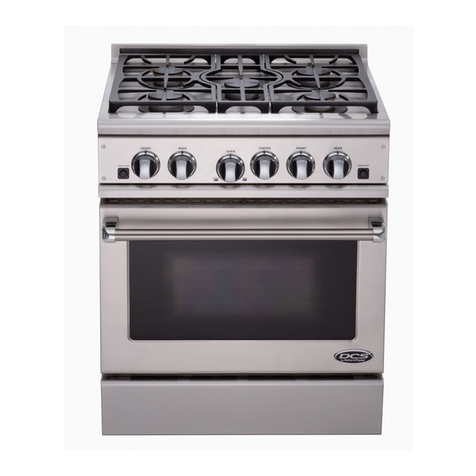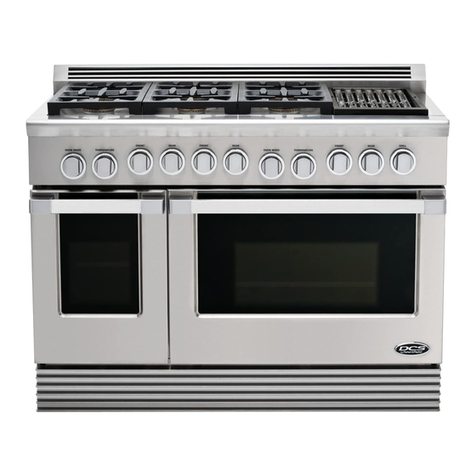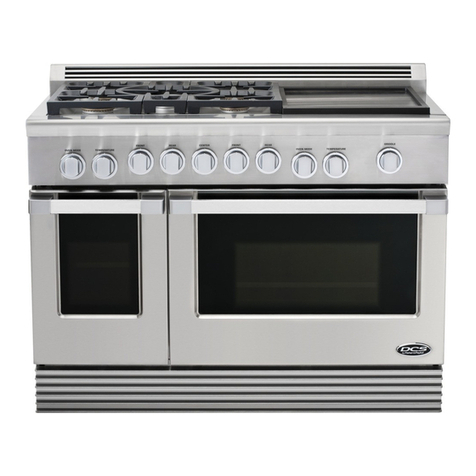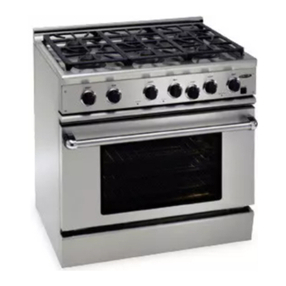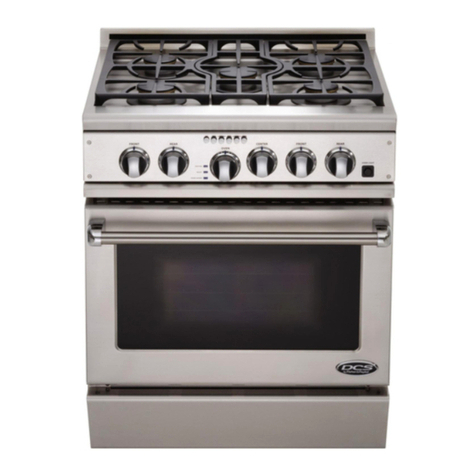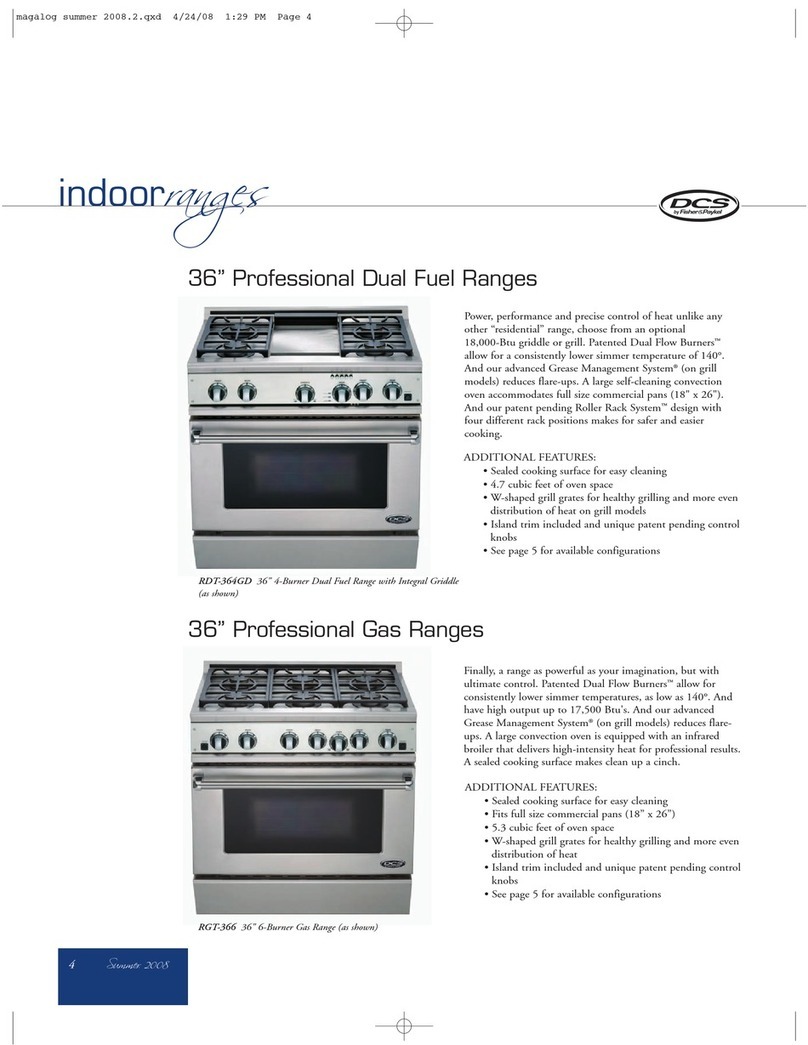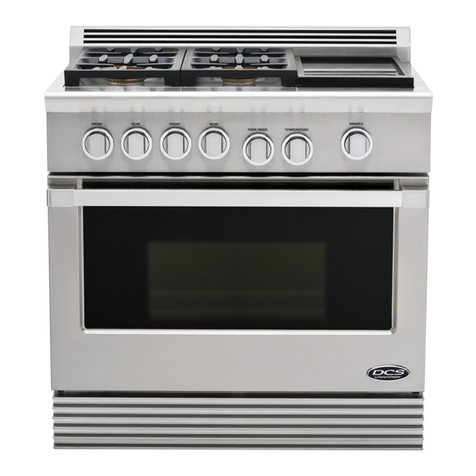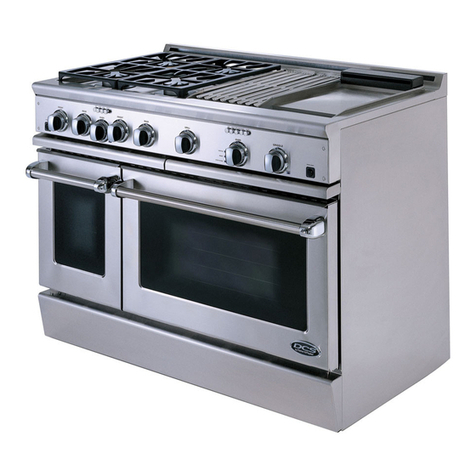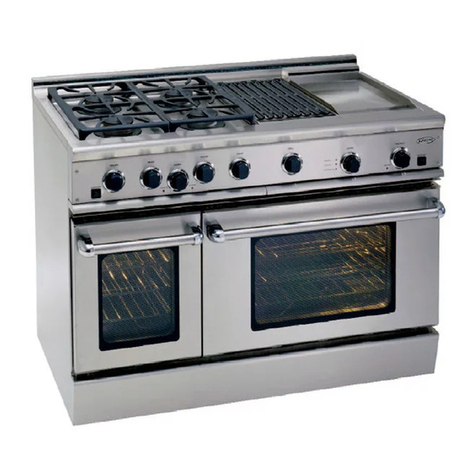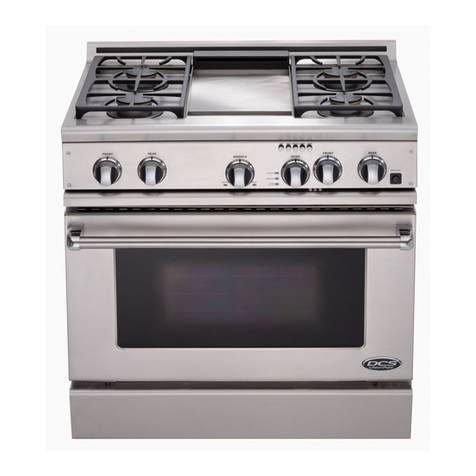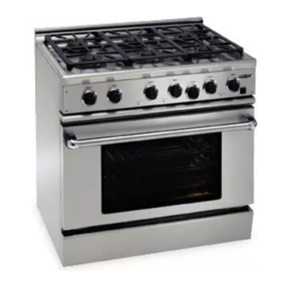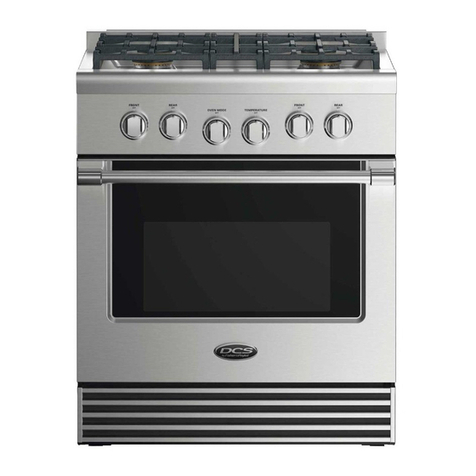INSTALLING ANTI oTIP DEVICE
Aii ranges must have an anti-tip device
correctly installed as per the following
instructions, if you puil the range out
from the wail for any reason, make sure
that the device is properly engaged
when you push the range back against
the wail. if it is not, there is a possible
risk of the range tipping over and
causing injury if you or a child stand, sit
or lean on an open oven door.
INCLUDED PARTS:
Included with this kit are:
(4) #10 x 2" wood screws,
(1) Antbtip bracket, and (1)Installation
instructions.
INSTALLING THE KIT:
instructions are provided for wood and
cement floors. Any other type of
construction may require speda[ instaF
[ation techniques as deemed necessary
to provide adequate fastening of the Anti-
tip bracket to the floor and wail The use of
this bracket does not preclude tipping of
the range when not properly installed.
(2)Small Holes for
Wood installations
(2) Large Holes for
Concrete installations
(2) Wood Screws into
Back Wall (ALL
Installations)
BACK
WALL
Fig. 5
A= 1/4" 1/2" 5/8"
Model
Series RDS-305 RDS-48 RDS-36
WOOD CONSTRUCTION:
Place the bracket against the back wail, into the right
rear corner where the range is to be located. Leave a
gap between the wail (or side of range) and the
bracket (see fig.@. Drill (2) 1/8"diameter pilot holes
in the centerofthe small holes. A nai[oraw[ may be
used if a drill is not available. Fasten the bracket
securely to the floor and wail
CONCRETE OR CEMENT CONSTRUCTION:
Hardware Required:
(2) sleeve anchors, lag bolts, and washers (not
provided). Locate the bracket as described above.
Drill the recommended size holes for the hardware.
Z_ WARNING
® ALL RANGES CAN TRP
® RNJURY COULD RESULT
e RNSTALL ANTR_TRP
BRACKET PACKED
RNSRDE OVEN
® SEE RNSTRUCTRONS
Fig. 7
install the sleeve anchors into the holes and then install the lag bolts through the bracket.The bolts
must be properly tightened as recommended for the hardware. Fasten the bracket securely to the
floor and wail.
ONCE INSTALLED:
Complete the range installation per the instructions provided with the product. Check for proper
installation of the range and Anti-tip device by grasping the back of the unit and carefully attempt to
tiff the range forward.






